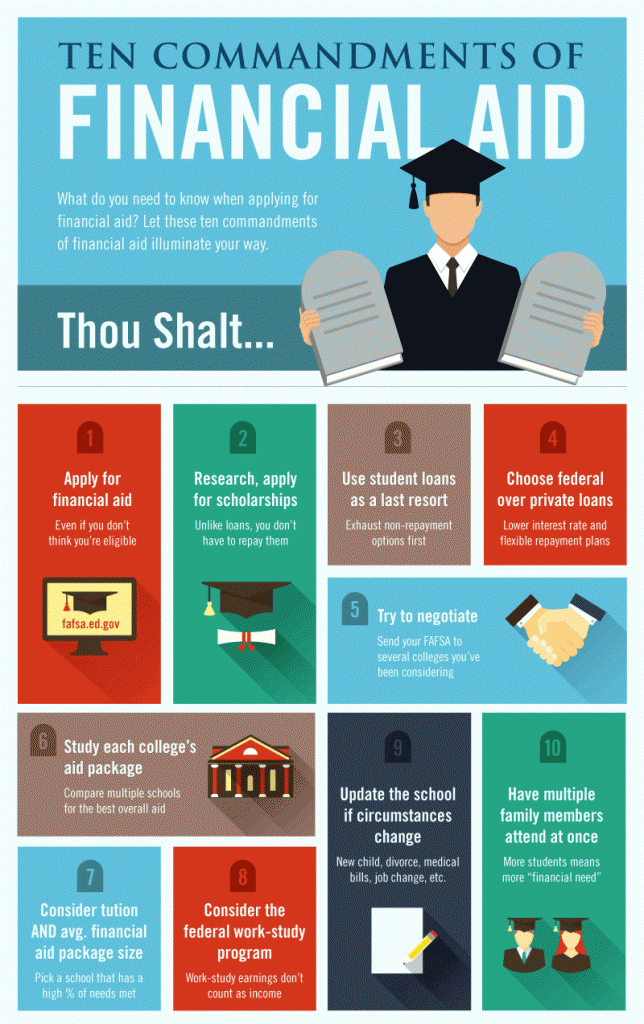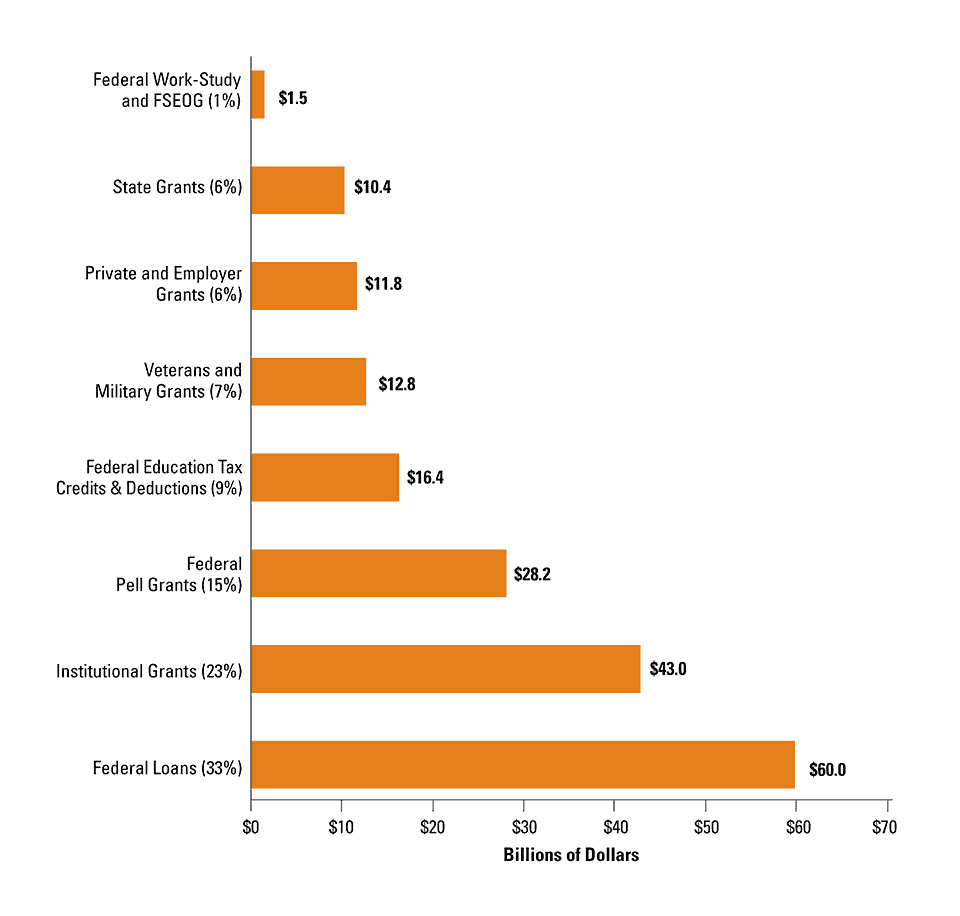
Going to college is a truly wonderful opportunity that will shape the rest of your life. Paying for tuition, however, can be daunting. Today, many students rely on financial aid to fill in the gaps and make it possible to further their education.
1. What is Financial Aid?
Financial aid is actually a very broad term. It applies to any type of loan, grant, scholarship, or employment opportunity offered to college students. Some of these, like employment opportunities are only available to those within specific financial parameters. Others, like student loans, are available to everyone. Grants and scholarships are handed out based on certain eligibilities like maintaining a high GPA or playing sports.
Are you wondering how many college students get financial aid? According to The College Board, a mission-driven not-for-profit organization that connects students to college success and opportunity, “In 2014-15, about two-thirds of full-time students paid for college with the help of financial aid in the form of grants and scholarships. Approximately 57 percent of financial aid dollars awarded to undergraduates was in the form of grants, and 34 percent took the form of federal loans.”
2. How Does Financial Aid Work?
This depends on the type of financial aid you’re receiving, but the initial process is the same. First, you will apply for the aid. This usually entails providing personal information, transcripts, and other relevant paperwork. You can apply through your guidance counselor’s office, via email, through school and organization websites, and by mail. Once the application is submitted it may take a couple of days or several weeks to hear back.
When you’re ready to start exploring financial aid options, don’t forget these 10 Commandments from CollegeAtlas.org.

If you’re awarded the aid, you’ll receive the money while in college. Most types of aid are broken down into years or semesters. Some programs, especially scholarships, will deposit the money to the school instead of the student, covering tuition and other costs directly.
3. What are the Terms of Repayment?
Your repayment situation will depend entirely on the type of aid you receive. Grants and scholarships do not have to be repaid in nearly all instances. The exception may be if you withdraw from school without completing the semester or otherwise fail to maintain a portion of the agreement.
Loans, of course, must be repaid in full. Many of today’s loans offer special conditions where repayment isn’t expected until you find a job or reach a certain age. This can help you get more settled into working before having to take on loan payments. Regular student loans, however, often have very high interest rates and large fees, so it’s a good idea to compare numbers before choosing a company.
Employment opportunities don’t require any form of repayment either. In this situation, you’re given a job on the campus, such as the library or cafeteria. You’ll work throughout the semester but instead of receiving wages, the school will pay towards your tuition costs.
4. How Much Financial Aid Will I Receive?
It’s impossible to say how much financial aid you’re eligible to receive without personal information. Luckily, the Free Application for Federal Student Aid (FAFSA) website has an estimator built right in so you’ll be able to find out about grants more easily. This tool, called the FAFSA4caster, will account for things like previous education, marital status, and more. Scholarships and work-study programs vary by university, of course, so you can likely contact your prospective school for more information.
While it may be difficult to say specifically the amount of financial aid you will receive, there is great data on the total aid made available to undergraduates. Check out the below chart provided by The College Board, which illustrates the amount and source of aid for 2015-2016.

Need More Answers to Your Financial Aid Questions?
If you’re not sure what direction to go, don’t be afraid to ask for help. At the College Benefits Research Group, we love to help new and returning students sort through the complex questions and decisions they face to further their education.
Additional Resources:
https://studentaid.ed.gov/sa/types
https://fafsa.ed.gov/




